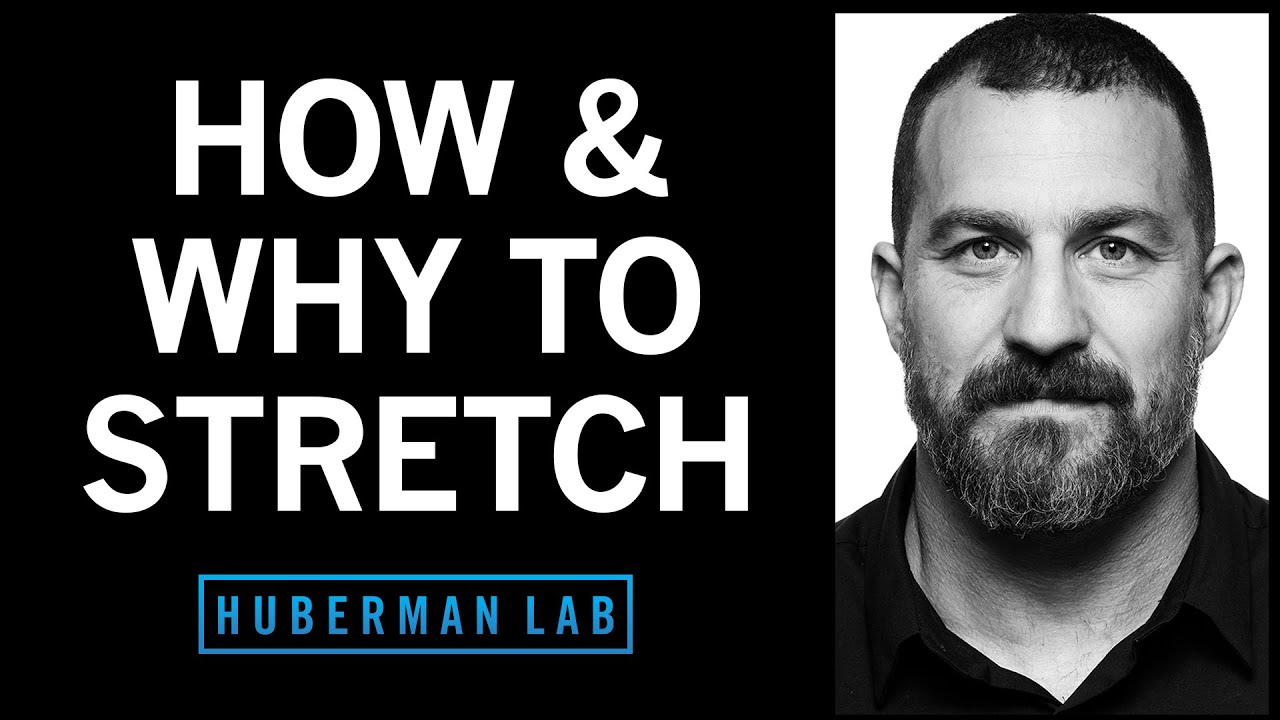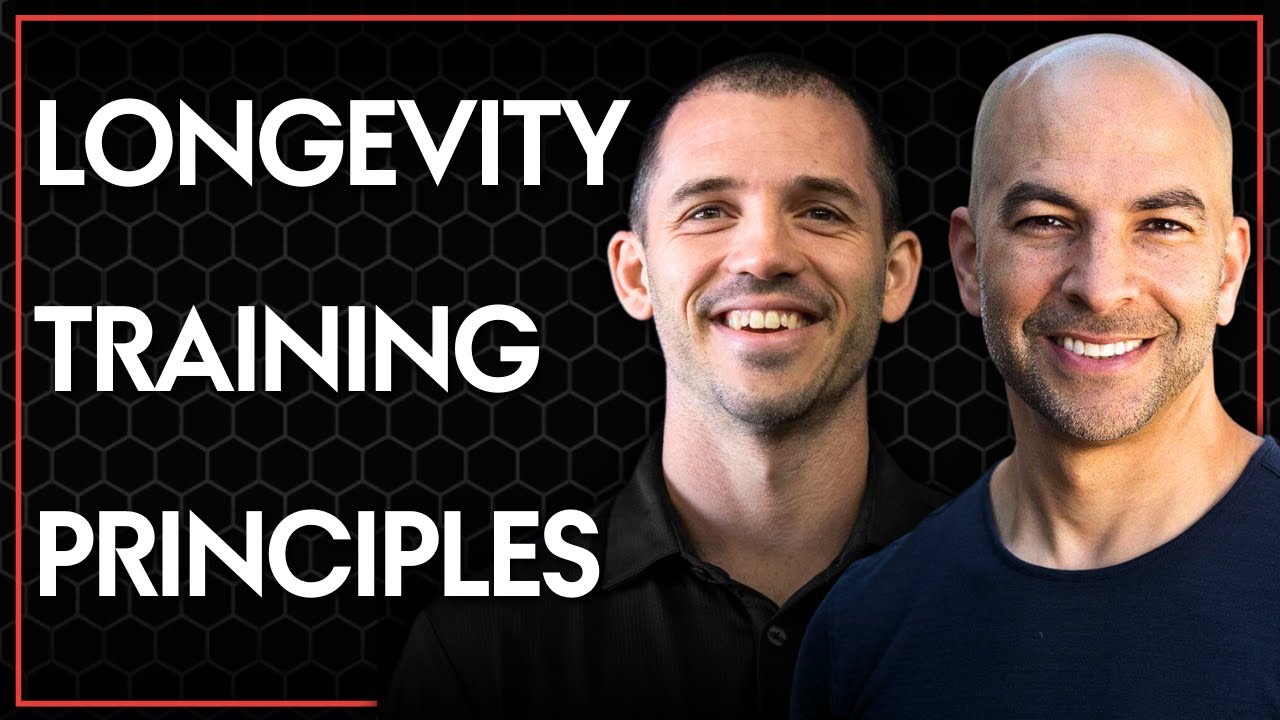- The astonishing data on the benefits of exercise for health, fitness, and performance, and how staying active can potentially boost your lifespan.
- What is VO2 max, how it’s measured, what leads to its decline, and the crucial role of peak fitness in determining physical capacity and lowering all-cause mortality.
- The concept of “managing suffering” and the importance of form and tempo in interval training to boost your VO2 Max and mitigate age-related decline.
- The danger of falls in later life, the importance of consistent training as we age, and how exercise decreases mortality by preserving fitness and strength.
- The substantial health benefits of light exercise, simple training regimens to follow and metrics to track, and training advice for the average person.
- The evolution of performance-enhancing drugs in sports, new testing methods, and the feasibility of an “exercise pill.”
Exercise, VO2 max, and longevity
Exercise, VO2 max, and longevity
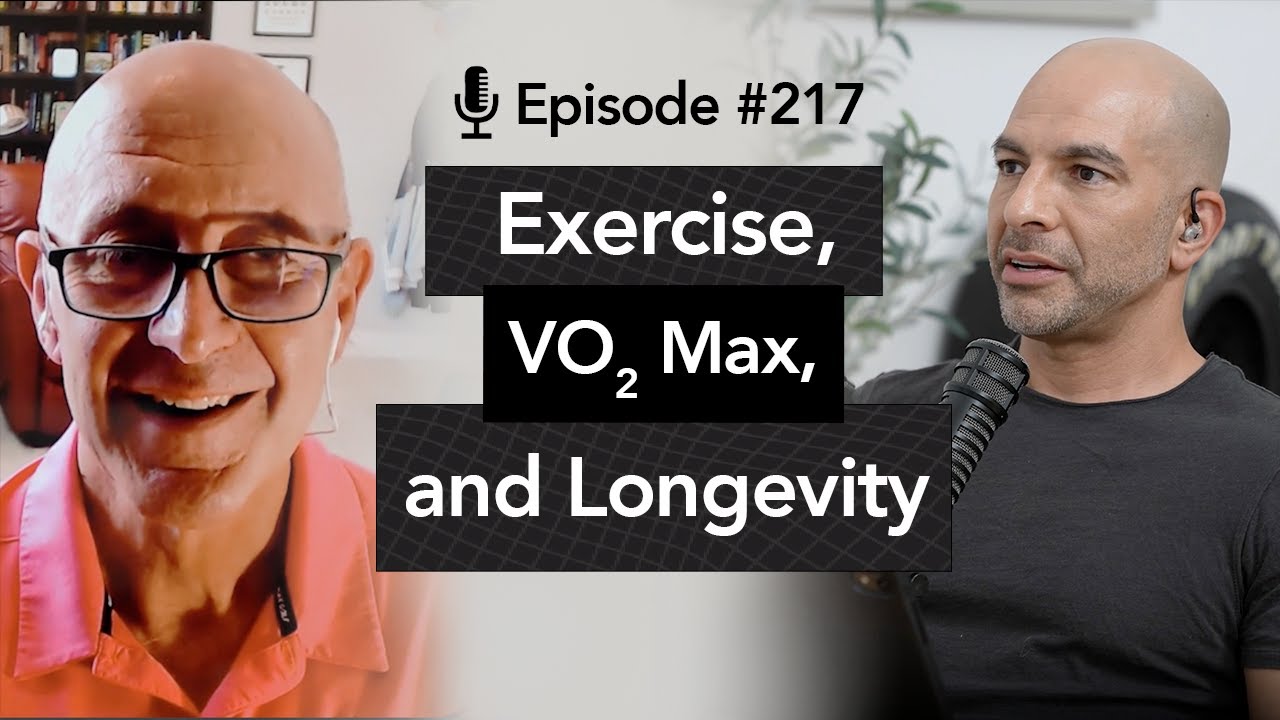
- Avoid inactivity at all costs! To slow the decline in muscle mass and strength, aim for at least 150 minutes of moderate-intensity aerobic exercise (e.g. brisk walking, running, swimming, cycling, etc.) per week, along with strength training (e.g., weightlifting, bodyweight exercises) in two or more days. And be consistent!
- If you're older or new to intense exercise, start with a pre-training phase: lighter workouts 1-2 times per week before progressing to more frequent intense sessions. This will help prevent overexertion and minimise the risk of injury. Also, consider using heart rate variability (HRV) tracking apps or devices to gauge your body's readiness for intense exercise.
- To enhance VO2 max and cardiovascular fitness, try the "4 by 4" method. This consists of 4 minutes of intense exercise (e.g. uphill cycling against resistance) at a steady pace, followed by 4 minutes of recovery, slowly unwinding the pace. Repeat the sets according to your training programme - the aim is to maintain consistent power output.
- People getting into their 40s and 50s should match strength training (e.g. body weight exercises) with circuit training and agility training (e.g. jumping rope). This strategy not only provides cardio and coordination benefits but also improves foot reactivity, which is crucial for preventing falls later in life.
- Try the hard-easy approach in your training programme. On hard days, engage in a rigorous circuit, followed by intense bike intervals. On easy days, prioritise “active rest”, using cycling and rowing as recovery, for example.
- Use fitness trackers or apps that offer VO2 Max estimation to monitor the progress in your cardio-respiratory fitness.
- Consider trying out unconventional training methods (e.g. hypoxia training) to stimulate altitude effects and potentially enhance your VO2 max.
Unlocking the Secrets of Athletic Performance & Health
The far-reaching benefits of exercise might be obvious to most people, and looking closely at scientific research reveals just how deeply and directly physical activity impacts our health, and athletic performance, and even extend our lifespan. The general guidelines suggest a weekly dose of at least 150 minutes of moderate-intensity aerobic exercises (e.g. brisk walking, cycling, or swimming) complemented by strength training exercises done on two or more days a week. Okay, but what else is there? And how can we tap further into the potential exercise holds?
Physiological Changes During Exercise & The Role of VO2 Max
When we exercise, our body responds with a bunch of intricate physiological adaptations that eventually improve our performance and health. One key metric used to gauge cardiovascular fitness is VO2 max — the maximum amount of oxygen a person can use during intense exercise. It is mainly influenced by things like heart rate and cardiac output, and has a direct link to your lifespan.
As we get older, various factors, including a reduction in cardiac output and peak heart rate, contribute to the decline in VO2 max. The good news is that it is possible to maintain some of that peak fitness with regular exercise. Doing that, in turn, can help lower the risk of mortality from all causes.
To do so, many people design their workouts according to the “Pyramid of Performance”; that is, a sturdy base (aerobic efficiency) propels the peak (VO2 max). One of the training models that has gained popularity lately is the 60-70-20-30-10, where each number refers to the levels of intensity with which you should divide your training session. Such kind of balanced training plan is particularly effective for building up endurance.
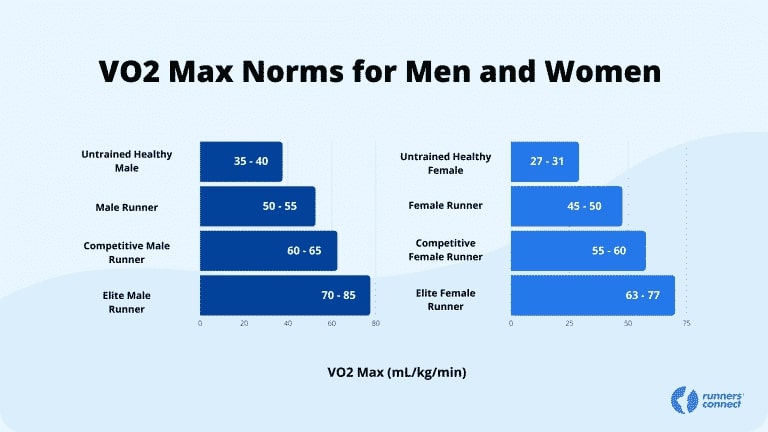
Source: https://runnersconnect.net/is-vo2-max-worth-spending-for/
Benefits of (Light) Exercise & Training Advice for Beginners
As we age, the risk of falls and loss of strength becomes more significant. Regular exercise emerges as a powerful shield against these challenges. Incorporating strength training, circuit training, and agility exercises can help maintain muscle mass, coordination, and foot reactivity. The hard-easy approach — mixing intense and easy training days — provides a balanced regimen that promotes physical well-being.
Even if you don’t want to train hard, staying in zone two (the moderate exercise zone) offers substantial benefits. Simply going for a walk or doing some light gardening can improve your health. The first 10-15 minutes of activity trigger positive physiological responses in your muscles and blood vessels, helping your body use insulin better and even protecting against weight gain. Granted, such a routine will probably not turn you into a marathoner overnight. Yet they can lead to meaningful physiological improvements.
If you’re just starting out, don’t worry about complicated measurements. Instead of worrying about lactating, using a tool as simple as the Rating of Perceived Exertion (RPE) allows you to pay attention to how you feel during exercise and avoid overexertion. The goal is to allocate 80% of the time to a level of effort where you can still hold a conversation whilst exercising. As you get more experienced, over three to six months or so, you can gradually add interval training. Transitioning to interval training involves incorporating weekly sessions of protocols such as the four-by-four mentioned above. This approach, known as “training to train,” prepares individuals for more demanding exercises. That said, the balance between challenging workouts and rest is always important.
“If you look at the decline in performance in age group in any sport where there’s pretty good record keeping ‒ people can start to decline at age 30 without training. You can push that back to age 40 with training.”
Mike Joyner

Source: https://www.vitalscend.com/zone-2-and-5-aerobic-training-for-longevity/
Interval Training and Boosting VO2 max
Understanding how to track your progress and optimise your workouts is of the essence. Experts recommend mixing intense sessions with easier ones. Interval training, where you alternate between high-intensity and recovery periods, is an effective strategy to boost VO2 max and combat the effects of ageing. However, it involves some pretty intense protocols. One such regime is the “four by four” approach: four minutes of intense effort, followed by four minutes of recovery, and repeat. The main idea behind it is to “manage suffering”, in the sense that maintaining rhythm and form during intervals is crucial to avoid a decline in performance under physical duress and enhancing overall cardiovascular fitness.
“There’s a very common mantra that says, “You can’t outrun a bad diet”. I would argue that’s probably not true. I think you can outrun a bad diet – but it’s pretty hard to do.”
Petter Attia
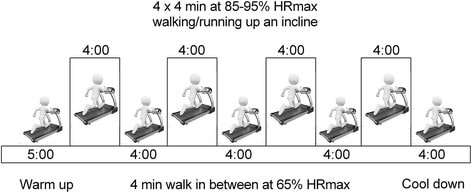
Source: https://pubmed.ncbi.nlm.nih.gov/27342073/
Could We Replace Exercise with a Pill?
Together with an increase in professionalisation and financial incentives, advancements in sports medicine have led to extended athletic careers. Athletes can now overcome injuries and manage physical conditions more effectively, maintaining peak performance over a longer period. Athletes like Michael Phelps and Tom Brady challenge the notion of finite exceptional performances.
Yet, these advancements have also led to an evolution of performance-enhancing drugs (PEDs). Sure, testing methods and anti-doping measures have been making it harder for athletes to gain an unfair advantage. But challenges in detection are still there, and the fact that technology continues to evolve means that it can work both ways.
One example is the so-called “exercise pills”, or polly pills. The idea behind it is to create pills that address risk factors and improve how our cells work, therefore giving people the benefits of exercise without actually working out. Unfortunately for some, while some advancements show promise, it’s becoming increasingly clear that the multi-faceted benefits of exercise cannot be easily replicated by a single pill.

